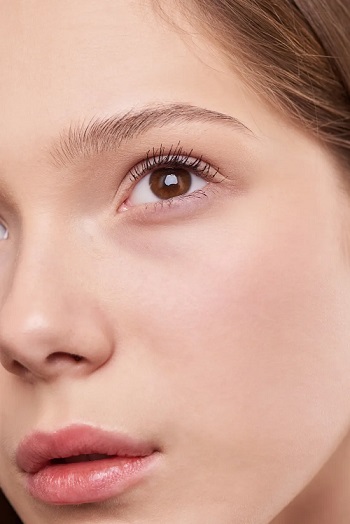The beauty industry has undergone a significant transformation with the rise of e-commerce. Traditionally, beauty products were sold in physical stores where consumers could test and experience them firsthand. However, the digital age has revolutionised this landscape, making online shopping a dominant force. The convenience of browsing and buying beauty products from the comfort of one’s home has significantly contributed to this shift.
Data underscores this rapid growth. According to Statista, the global beauty e-commerce market was valued at approximately USD 532 billion in 2020 and is projected to reach USD 716 billion by 2025. In a survey done by DontPayFull, it was found out that shoppers save $382.01 a year using coupons for Beauty Products. This surge is not just a trend but a fundamental change in consumer behaviour. Brands that once relied solely on physical stores are now investing heavily in their online presence to capture this burgeoning market.
The rise of e-commerce in the beauty sector is not just about convenience. It also offers a broader range of products, personalised recommendations, and often better prices. This shift has levelled the playing field, allowing smaller brands to compete with industry giants. As we delve deeper, we’ll explore the factors driving this growth and the implications for the future of the beauty industry.
Changing Consumer Behaviour
Consumer behaviour has evolved dramatically in the digital age. One of the most significant changes is the rise of mobile shopping. With smartphones becoming ubiquitous, consumers now have the power to shop anytime, anywhere. This has led to a surge in mobile commerce, with beauty brands optimising their websites and apps for mobile users to enhance the shopping experience.
Subscription services have also gained immense popularity. Companies like Birchbox and Ipsy have capitalised on this trend, offering personalised beauty boxes delivered to consumers’ doorsteps monthly. These services provide a curated selection of products, allowing consumers to discover new brands and products without the commitment of full-sized purchases. This model has proven successful, with many consumers valuing the convenience and surprise element of these subscriptions.
Social media’s influence on consumer behaviour cannot be overstated. Platforms like Instagram, TikTok, and YouTube have become powerful marketing tools for beauty brands. Influencers and beauty gurus showcase products, provide tutorials, and offer reviews, significantly impacting purchasing decisions. This shift towards social media-driven marketing has made it essential for brands with the help of Amazon agency services to maintain a strong online presence and engage with their audience authentically.
Tech Innovations Driving E-commerce
Technological advancements have been pivotal in propelling the beauty e-commerce sector forward. Artificial intelligence (AI) and machine learning are at the forefront of this revolution. These technologies enable personalised shopping experiences by analysing consumer data and preferences. For instance, AI-powered chatbots can provide tailored product recommendations, answer queries, and even assist with virtual try-ons.
Augmented reality (AR) has also made a significant impact. Brands like Sephora and L’Oréal have introduced AR features that allow consumers to virtually try on makeup products using their smartphones. This technology bridges the gap between online and offline shopping, giving consumers the confidence to purchase products without physically testing them. The convenience and accuracy of these virtual try-ons have made them a popular feature among online shoppers.
Big data plays a crucial role in understanding consumer behaviour and trends. By analysing vast amounts of data, beauty brands can identify emerging trends, optimise their marketing strategies, and improve product offerings. Companies that leverage big data effectively can stay ahead of the competition and cater to their customers’ evolving needs more efficiently.
Market Trends in Beauty E-commerce
Several market trends are shaping the beauty e-commerce industry today. The rise of clean beauty is one such trend. Consumers are increasingly seeking products free from harmful chemicals and made with natural ingredients. Brands like Drunk Elephant and Tata Harper have gained popularity by focusing on clean beauty, emphasising transparency and sustainability in their product formulations.
Influencer marketing continues to be a driving force in the beauty industry. Collaborations between brands and influencers can lead to significant boosts in sales and brand visibility. Influencers with large followings can introduce products to a broader audience, creating buzz and driving demand. This trend has made it essential for beauty brands to identify and partner with influencers who align with their brand values and target audience.
Sustainability is becoming a critical consideration for consumers. Eco-friendly packaging, cruelty-free products, and ethical sourcing are now top priorities for many shoppers. Brands that prioritise sustainability, such as Lush and The Body Shop, are resonating with environmentally conscious consumers. This shift towards sustainability is not just a trend but a necessary evolution as consumers become more aware of their environmental impact.
Image source: https://www.freepik.com/free-photo/makeup-tools_4166685.htm
BondiBoost’s E-commerce Strategy
BondiBoost, an Australian haircare brand, has made significant strides in the e-commerce space. Founded by Alexandra Jakob, the brand quickly gained traction with its high-quality, Australian-made products. BondiBoost’s success can be attributed to its innovative social media marketing and influencer partnerships, which have helped the brand reach a global audience.
Social media campaigns have been a cornerstone of BondiBoost’s strategy. By leveraging platforms like Instagram and TikTok, the brand has created engaging content that resonates with its target audience. Influencers play a crucial role in these campaigns, showcasing the effectiveness of BondiBoost’s products and driving consumer interest. This approach has not only increased brand visibility but also built a loyal customer base.
Despite its rapid growth, BondiBoost has faced challenges, such as navigating the competitive beauty market and managing supply chain complexities. However, the brand has successfully overcome these obstacles by staying true to its core values and continuously innovating. Alexandra Jakob’s leadership and vision have been instrumental in steering BondiBoost towards sustained success in the e-commerce landscape.
Leadership in E-commerce
Strong leadership is vital for driving e-commerce success in the beauty industry. Tamalin Morton, CEO of Adore Beauty, exemplifies this with her strategic initiatives and leadership style. Since joining Adore Beauty in 2023, Morton has focused on enhancing consumer engagement and operational efficiency, leveraging her extensive retail experience.
Under Morton’s leadership, Adore Beauty has implemented several strategic initiatives to stay ahead in the competitive e-commerce market. These include optimising the user experience on their website, expanding their product range, and investing in personalised marketing. Morton’s ability to adapt to the rapidly changing landscape has been crucial in maintaining Adore Beauty’s position as a leading online beauty retailer.
Other leaders in the beauty e-commerce space have also made significant contributions. Their ability to innovate, understand consumer needs, and drive strategic growth has been instrumental in shaping the industry’s future. Strong leadership not only ensures business success but also inspires teams to strive for excellence and continuously improve.
Navigating Challenges and Seizing Opportunities
The beauty e-commerce industry faces several challenges, including intense competition, supply chain issues, and changing consumer preferences. Brands must constantly innovate and adapt to stay relevant in this dynamic market. Competition from both established players and new entrants makes it essential for brands to differentiate themselves through unique value propositions and exceptional customer experiences.
Supply chain complexities can also pose significant challenges. Ensuring timely delivery, managing inventory, and maintaining product quality are critical aspects that require efficient supply chain management. Brands that can streamline their supply chain operations and address these challenges effectively will have a competitive edge in the market.
Despite these challenges, there are numerous opportunities for growth and innovation. Emerging markets present untapped potential for beauty brands looking to expand their reach. Additionally, new technologies, such as blockchain for supply chain transparency, offer exciting possibilities for enhancing consumer trust and operational efficiency. By staying ahead of trends and embracing innovation, beauty e-commerce businesses can navigate challenges and seize opportunities for sustained growth.
Future Prospects
The future of beauty e-commerce looks promising, with several emerging technologies set to shape the industry. Blockchain technology, for instance, can enhance supply chain transparency, ensuring product authenticity and ethical sourcing. This technology can build consumer trust and address concerns related to counterfeit products and unethical practices.
The rise of Gen Z consumers is another significant factor influencing the future of beauty e-commerce. This tech-savvy generation values authenticity, sustainability, and personalised experiences. Brands that can cater to these preferences and engage with Gen Z consumers effectively will be well-positioned for future success. Understanding the unique needs and behaviours of this demographic will be crucial for brands looking to capture their attention and loyalty.
Predictive analytics is also set to play a vital role in the future of beauty e-commerce. By analysing consumer data and trends, brands can anticipate demand, optimise inventory, and personalise marketing efforts. This data-driven approach will enable brands to make informed decisions and stay ahead of the competition. The integration of these emerging technologies will drive the evolution of the beauty e-commerce industry, creating new opportunities for growth and innovation.
The Ever-Evolving Beauty E-commerce Landscape
The beauty e-commerce industry is continuously evolving, driven by changing consumer preferences, technological advancements, and market trends. The rapid growth of e-commerce has transformed how consumers shop for beauty products, offering convenience, variety, and personalised experiences. Brands that can adapt to these changes and stay ahead of trends will thrive in this dynamic landscape.
Strong leadership, as exemplified by individuals like Alexandra Jakob and Tamalin Morton, plays a crucial role in navigating the complexities of the beauty e-commerce market. Their strategic initiatives and innovative approaches have set benchmarks for success in the industry. By embracing innovation, understanding consumer needs, and prioritising sustainability, beauty e-commerce businesses can achieve sustained growth and success.
As the industry continues to evolve, staying informed about emerging technologies and market shifts will be essential. The future of beauty e-commerce holds exciting possibilities, and businesses that can anticipate and adapt to these changes will be well-positioned to capitalise on new opportunities. The journey of beauty e-commerce is far from over, and the next chapter promises to be even more transformative.




